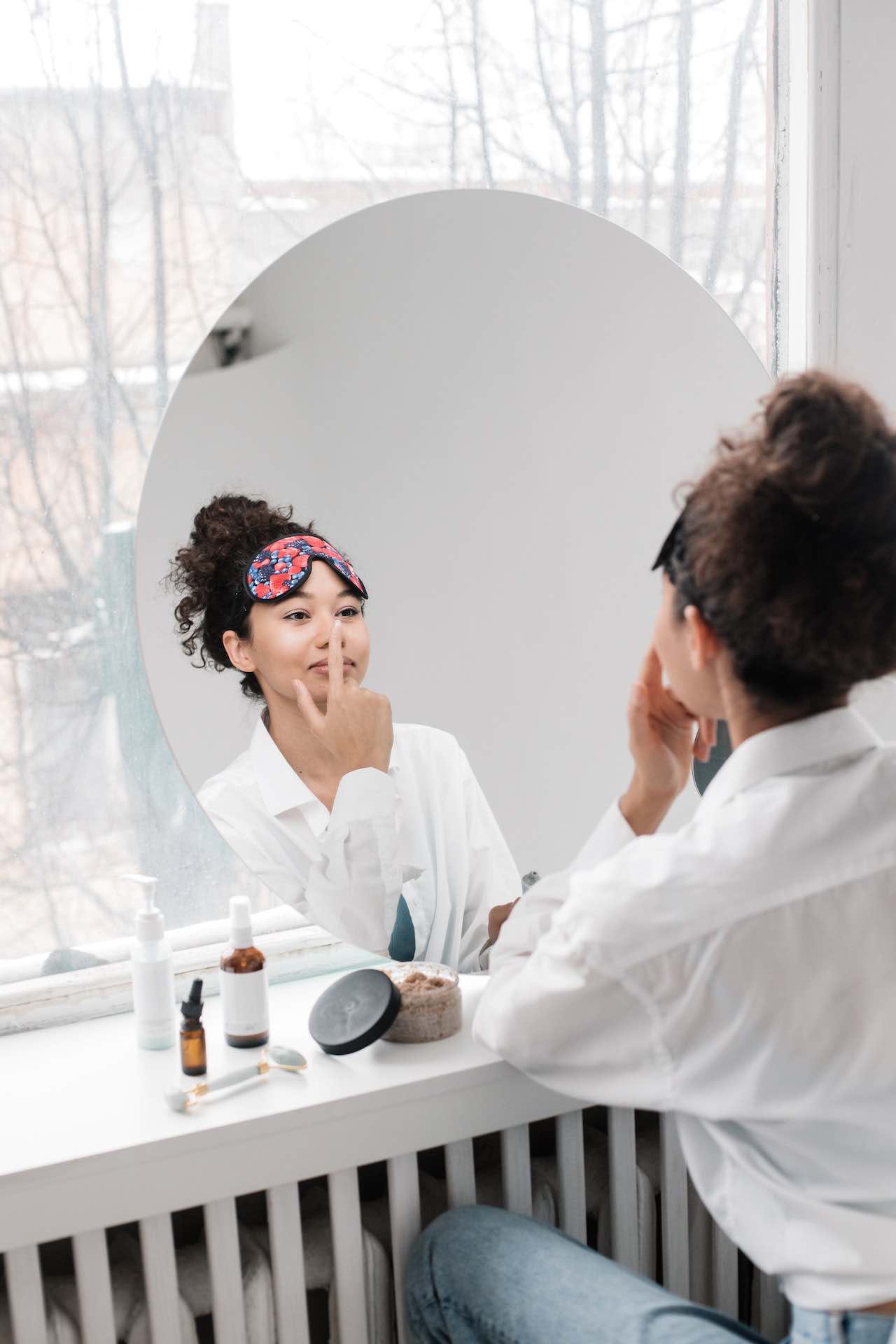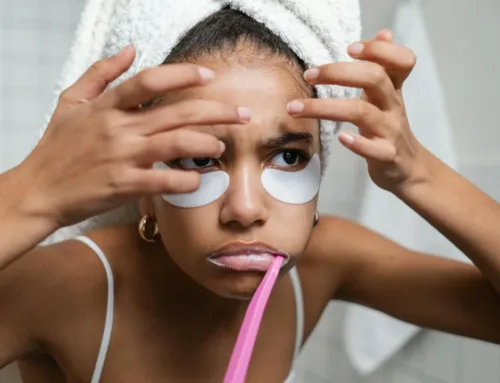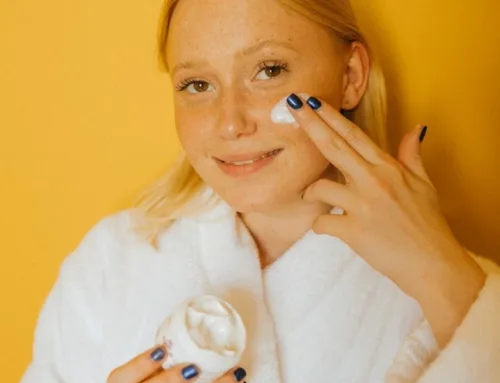What are “Facial Extractions”?
Facial extraction is a type of treatment that is usually performed during a professional facial. The process involves removing clogged pores, blackheads, and whiteheads from the face using special tools and techniques. A licensed cosmetologist or esthetician usually performs the procedure.
During the extraction process, the esthetician will use a small, sterile tool, such as a comedone extractor, to gently press on the skin around the clogged pore to release the trapped sebum, oil, and bacteria. They may also use other tools, such as a magnifying lamp or a small brush, to help loosen and remove the impurities.
Facial extractions can benefit people with oily or acne-prone skin, as they can help unclog pores and prevent breakouts. It can also help improve the skin’s overall appearance by reducing the visibility of black and whiteheads.
It’s important to note that a licensed cosmetologist or aesthetician with the appropriate tools and equipment should perform facial extractions. Let your esthetician know if you have any skin conditions, such as rosacea, eczema, or sensitive skin, as extractions may not be appropriate for these conditions.
Who should do facial extractions?
Facial extractions should be performed by a licensed cosmetologist or aesthetician who has been appropriately trained in the technique and has the appropriate tools and equipment.
These professionals are trained to understand the different skin types, identify problem areas, and perform extractions safely and effectively. They also follow strict hygiene protocols to ensure the procedure is as safe as possible.
It’s important to note that facial extractions are not suitable for everyone. If your skin is sensitive, or you have rosacea, eczema, or other skin conditions, you must talk to your dermatologist or skincare professional before an extraction treatment. They can advise you on whether or not the procedure is appropriate for you and, if so, recommend the right esthetician or aesthetician for the job.
It’s also important to let your esthetician know if you have any particular concerns or issues with your skin before the procedure so that they can adjust the treatment accordingly.
In summary, facial extractions should be done by a trained and licensed cosmetologist or aesthetician, and a person should consult with a skincare professional or dermatologist before undergoing the procedure.
Who should get facial extractions?
Facial extractions may benefit people with oily or acne-prone skin, as they can help unclog pores and prevent breakouts. It can also help improve the skin’s overall appearance by reducing the visibility of black and whiteheads.
People with non-inflammatory acne, such as black and whiteheads, may benefit from extractions. Extractions can also be used to remove sebaceous filaments, which are small, hair-like plugs that can appear on the nose and chin.
Additionally, people with congested skin may benefit from extractions, meaning they have a lot of oil and debris built up in the pores. It can help to clear out the pores and improve the overall appearance and feel of the skin.
However, people with inflammatory acne, such as cysts and nodules, should not get facial extractions. These types of acne are more profound and require different kinds of treatments.
It’s essential to remember that facial extractions should be done by a trained and licensed cosmetologist or aesthetician. It’s always suggested to consult with a skincare professional or dermatologist before the procedure. They can advise you on whether or not the procedure is appropriate for you and, if so, recommend the right esthetician or aesthetician for the job.
How often should I get facial extractions?
The frequency of facial extractions can vary depending on individual needs and skin type.
- For people with oily or acne-prone skin: For people with oily or acne-prone skin, it may be recommended to receive facial extractions every 4-6 weeks, as this can help to prevent buildup in the pores and reduce the occurrence of breakouts.
- For people with congested skin: For people with congested skin, it may be recommended to receive facial extractions every 6-8 weeks, as this can help to clear out the pores and improve the overall appearance of the skin.
- For people with non-inflammatory acne: For people with non-inflammatory acne, such as blackheads and whiteheads, it may be recommended to receive facial extractions every 4-6 weeks, as this can help to remove the buildup of sebum and impurities.
It’s important to note that these are general guidelines, and the frequency of facial extractions should be determined by a skincare professional or an esthetician who has been trained in extractions. They will consider your skin type, needs, and concerns before making recommendations.
It’s also important to inform the esthetician of any skin conditions or concerns and any medications you are taking, as this may affect the extraction.
Maintaining a good skincare routine, including cleansing, exfoliating and moisturizing, is also essential to keep the skin healthy and reduce the need for routine extractions.
How to prepare for facial extractions?
Below you can find some steps you can take to prepare for a facial extraction:
- Cleanse your skin thoroughly: Cleanse your skin thoroughly to remove any makeup, dirt, and oils that may be present on the surface of the skin. This will help to prepare the skin for the extraction process.
- Avoid exfoliating: Avoid exfoliating the skin for at least 24 hours before the extraction, as this can cause irritation and make the skin more sensitive.
- Avoid waxing or threading: Avoid waxing or threading the face for at least 24 hours before the extraction, as this can also cause irritation and make the skin more sensitive.
- Inform your esthetician of any skin conditions or concerns: Let your esthetician know if you have any skin conditions or problems, as well as any medications you are taking, as this may affect the extraction process.
- Wear comfortable clothing: Wear comfortable clothing that allows easy access to the face and neck.
- Avoid caffeine and heavy meals: Avoid caffeine and heavy meals for a few hours before the extraction, as they can stimulate the body and make it harder to relax.
- Relax and breathe deeply: During the extraction, try to relax and breathe deeply, as this can help to reduce discomfort and allow the esthetician to perform the procedure more effectively.
- Follow the esthetician’s instructions: Follow the esthetician’s instructions before and after the extraction. They know best what is suitable for you and your conditions.
What should and should not do after facial extractions?
Below are some things you should and should not do after a facial extraction:
- Do: Apply an ice pack or a cold compress to the treated area for a few minutes to reduce swelling and redness.
- Do: Gently cleanse the skin with a mild cleanser and lukewarm water. Avoid using hot water, as this might cause irritation and inflammation.
- Do: Apply a moisturizer to the treated area to hydrate the skin and preserve it from further irritation.
- Do: Avoid wearing heavy makeup or using oily skincare products for at least 24 hours after the extraction.
- Do: Avoid exposing the treated area to direct sunlight or UV rays, which can cause irritation and inflammation.
- Do: Avoid touching or picking at the treated area, which can cause infection or scarring.
- Do: Avoid strenuous activities for a few hours after the extraction, as this can increase blood flow to the face and cause inflammation.
- Do: Avoid saunas, steam rooms, or hot tubs for the first twenty-four hours after the extraction, as the heat can cause the blood vessels to dilate and impede the healing process.
- Do: Follow the esthetician’s instructions for aftercare. They know best what is suitable for you and your conditions.
- Don’t: Forget to keep the skin hydrated by drinking water and using moisturizer.




